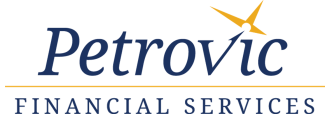What do you invest in?
We use mostly institutional mutual funds and some ETFs (exchange-traded funds) to diversify across asset classes, such as cash, bonds, stocks and non-traditional. Institutional classes of mutual funds let us get cheaper operating expenses than investors can access on their own. All mutual funds have internal operating expenses which pay for the manager, the analyst, and all those prospectuses you get in the mail. A lower operating expense ratio means higher performance per year. These lower expenses offset a portion of our fees.
Do you invest in individual stocks and bonds?
Generally, no. However, if a client already owns individual stocks or bonds, we will discuss if a custom portfolio utilizing the existing positions make sense. If you have low-cost basis stock positions, a custom portfolio incorporating these low-cost stocks often makes the most sense. As always, our investment plan proposal details all our recommendations before any decisions are made.
How do you decide to recommend, or change the recommendations, for an investment?
We have an internal investment committee that meets regularly and makes recommendations for managing portfolios. Three CFP professionals are active members of this committee.
We use investment research to monitor the mutual funds and ETFs (exchange-traded funds) we are using. Each month we delve deeper into some asset segments to see what else is available. We use a long-term focus, with 5-year and 10-year data points, while keeping an eye on short-term statistics. We follow management commentaries and conference calls, and turnover among the fund’s management and analysts.
Our CFP professionals are diligent about staying current on financial trends and business news, both in the US and globally. We read journals and white papers, attend conferences and meet with fund representatives. We are constantly doing due diligence to fine tune portfolios to help counter any changes in the market.
We are educated in the field and have commensurate credentials. We have a great deal of experience in this field. We spend our time (almost) every day in this field.
Could I spend some of my time and do this myself?
Yes, but only if you have the right aptitude, willingness to research and monitor the financial markets and investments, and discipline to invest for the long term. However, even if someone possesses all the above, we have seen that most people are unfamiliar with the related tax issues that in combination with sound investment management, helps him/her maximize their wealth by making the right decisions.
What are all the costs of investing?
We believe you should know all the costs of investing, and include reports in your review meeting to cover those listed below.
There are indirect costs of investing. Both mutual funds and ETFs have internal expenses. We always try to use institutional share classes when available, to obtain lower operating expenses than you would get on your own. Lower cost institutional classes can provide you with a higher rate of return.
Our fee is a direct cost of investing. In addition, in your accounts at Raymond James, you pay a transaction fee to Raymond James when we buy or sell a mutual fund, ETF, or stock. Our institutional rate is most often $0, and sometimes $10 or $20. This is substantially reduced from the retail rates most pay at other brokerage firms. However, we are not frequent traders since trading costs reduce our clients’ rate of return.
For clients who have non-Raymond James accounts that we manage, such as an annuity or 401k at work, you may pay additional indirect costs. In some cases, we will recommend transferring an annuity to a cheaper financial institution. We report on the expenses you are paying inside those accounts so you are at least aware of the price tag.
Finally, taxes you pay to the government are a cost of investing. In taxable accounts, we monitor your tax position throughout the year and share that information with you since we are sometimes able to use tax strategies to minimize taxes. You will pay more taxes if you buy and sell frequently. (Some advisors have an incentive to do that if they are commission-based.)
Are my investments insured?
No, investing in securities involves risk of loss that investors should be prepared to bear. No custodian insures against investment losses.
However, accounts held by Raymond James Bank, N.A. or in the Raymond James Bank Deposit Program are insured by the Federal Deposit Insurance Corporation (FDIC). The FDIC protects against the loss of insured deposits if an FDIC-insured bank or savings association fails. FDI deposit insurance is backed by the full faith and credit of the United States government.
Raymond James has purchased excess Securities Investor Protection Corporation (SIPC) coverage through various syndicates of Lloyd’s a London-based firm. SIPC account protection applies when a SIPC-member firm fails financially and is unable to meet obligations to security clients, but does not protect against market fluctuations. The additional protection currently provided has an aggregate firm limit of $750 million, including a sub-limit of $1.9 million per customer for cash above basic SIPC for the wrongful abstraction of customer funds.
The basic FDIC deposit insurance coverage limits are: $250,00 for a single account with one owner; $250,000 per co-owner on joint accounts; and $250,000 per owner on IRAs and certain other retirement documents. These deposit insurance coverage limits refer to the total of all deposits that an account holder(s) has at each FDIC-insured bank. The above list shows only the most-common ownership categories that apply to individual and family deposits, and assume that all FDIC requirements are met.
If you have questions, please visit fdic.gov/deposit or call 877.275.3342.
I've retired! Where do I take money from first: my IRA, annuity or brokerage account? How much money can I take yearly without running out?
Withdrawal strategies during retirement are important. By properly prioritizing each account you draw from first, second, etc., clients can minimize their taxes and maximize their wealth. You will also want to consider your estate plans to avoid leaving heirs financial assets that will be heavily taxed. Our withdrawal analysis can help you determine how much to withdraw annually. Withdrawing too much can leave you without funds late in life; too little can deny you the pleasures you deserve.
Can I retire at 60 with what I have in my 401k and joint account? Do I need to increase what I am saving each year to do that?
Many clients ask these questions. A retirement projection and analysis can provide you with the answers for your situation and explore your alternatives. Perhaps you can choose to work part-time, retiring at age 60, as some of our clients do. Or, perhaps you will purchase a second home in Arizona as one fun-loving couple chose to do recently.
I just turned 70-and-a-half. Do I need to do something with my IRA?
Retirement is no longer a simple phase of life. Many retired clients choose a long-term, on-going relationship with us to handle the details, freeing them to enjoy this time in their lives. Yes, at 70-and-a-half, you do need to start your IRA distributions if you have not already done so. Which accounts you withdraw from first - IRAs, Roths, taxable accounts - can help you maximize wealth. We work with clients to see what is best for their situation.
We are worried about what will happen to our children and our assets if something happens to us. What should we do?
Clients often are wise to prepare for the “if something happens” scenario. Based on the size of your estate, we will discuss different alternatives you may want to pursue. In addition, for financial planning clients, we prepare a report of all assets under management to ensure that your time with your estate planning attorney is most productive. Since we give fee-only financial advice, we are not biased to recommend that you buy insurance merely to leave a huge legacy or pay potential estate taxes.
Look at my stock options. Can you help me determine how much I really have, and what I should have? What I should do with these?
Executives often do not have time to analyze the complexities of stock options. Company reports may not clearly spell out tax consequences. Our analysis can help you see how much you really have, after all taxes are paid. Plus, you will want to carefully plan when to exercise your stock options, particularly if you have incentive stock options. You may want to take advantage of stock swap features if they're included in your plan. Modeling analysis can help you determine when to exercise - now or wait 10 years? What factors in your situation, and in your company, may affect timing for exercise?
We have investments scattered here and there, but we cannot watch them like we should. How can we do better?
When you choose our investment management services, we develop and monitor a diversified investment portfolio. Most clients do not have the time, knowledge, or desire to tackle that task. We will review all your investment accounts: IRA, 401(k), 403(b), and taxable accounts. We will develop an investment plan to help determine which specific investments are appropriate to keep and what investments could be purchased to upgrade the quality of investments and increase diversification.
We provide fee-only financial advice to our clients on all our services. This means that we do not accept any commissions. Our fee-only approach lets you know exactly what you are paying and how it affects your return.
Your investment plan considers tax consequences of any proposed sale, and any fees for consolidating or moving accounts. We feel it is important for you to know and approve all aspects of your investment

